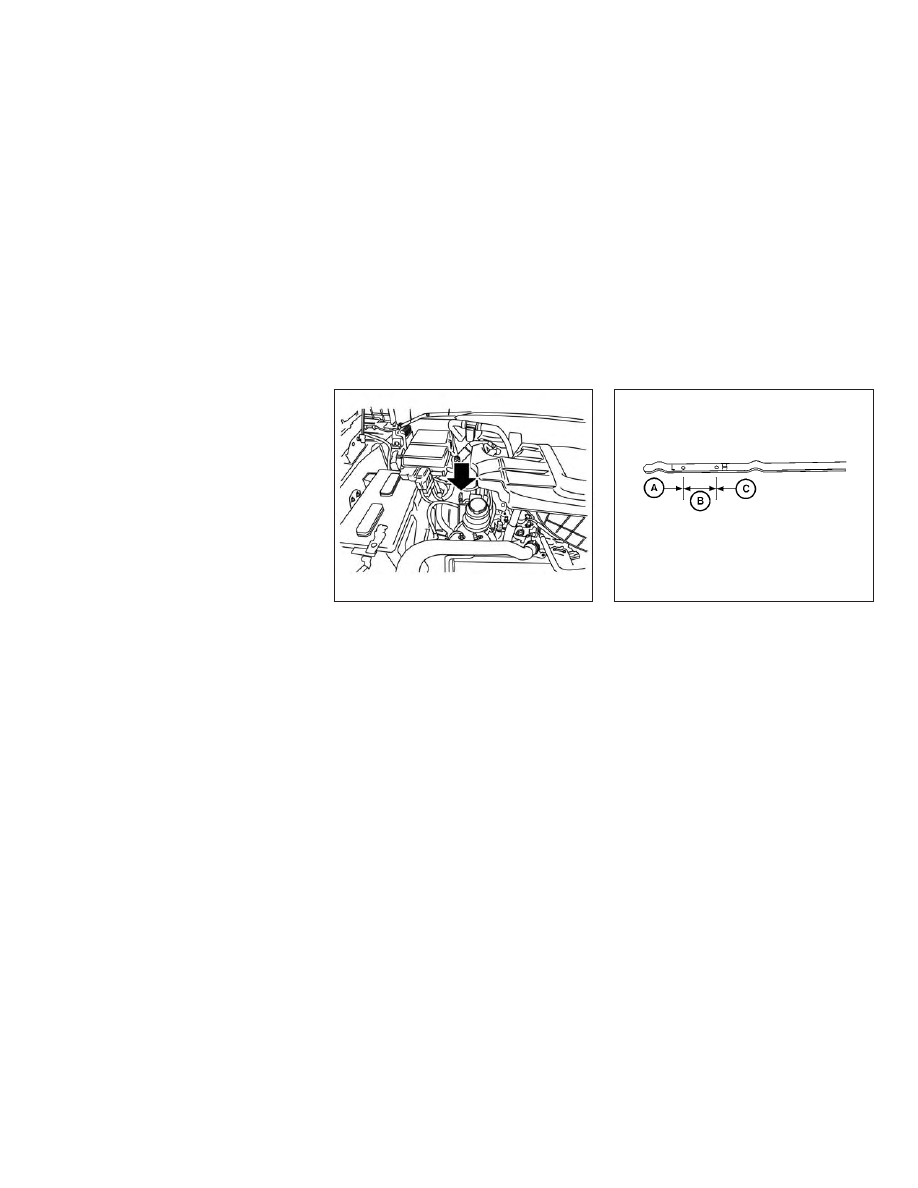Nissan Titan (2019 year). Manual - part 28

Engine coolant must be disposed of prop-
erly. Check your local regulations.
For additional information on changing the
Cummins 5.0L engine coolant, refer to the
Titan Diesel Owner’s Manual.
CHECKING ENGINE OIL LEVEL
1. Park the vehicle on a level surface and
apply the parking brake.
2. Start the engine and let it idle until it
reaches operating temperature.
3. Turn off the engine. Wait more than
15 minutes for the oil to drain back
into the oil pan.
4. Remove the dipstick and wipe it clean.
Reinsert it all the way.
5. Remove the dipstick again and check
the oil level. It should be between the H
(High) and L (Low) marks
䊊
B
. This is the
normal operating oil level range. If the
oil level is below the L (Low) mark
䊊
A
,
remove the oil filler cap and pour rec-
ommended oil through the opening.
Do not overfill
䊊
C
.
6. Recheck oil level with the dipstick.
It is normal to add some oil between oil
maintenance intervals or during the
break-in period, depending on the sever-
ity of operating conditions.
VK56VD engine
LDI2956
VK56VD engine
LDI0371
ENGINE OIL
Do-it-yourself
8-7